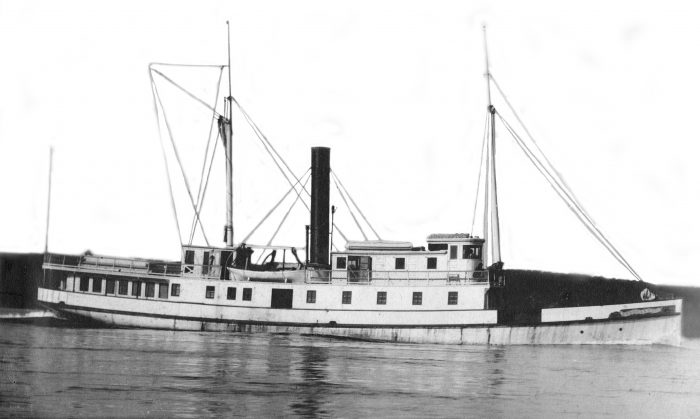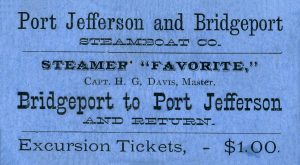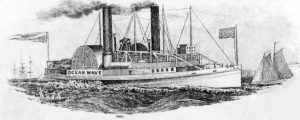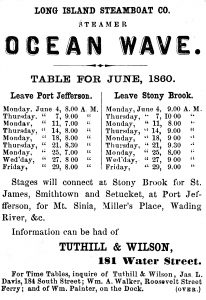Hometown History: Steamboat days in early Port Jefferson

On July 4, 1840, the diarist George T. Strong arrived in Port Jefferson for the holiday, not on a packet or other sailing ship, but on the Sun, the first in a succession of steamboats to make regular runs between New York City and the village.
In his account of the trip, Strong wrote that the Sun had left Manhattan at 8 a.m., stopped at Cow Harbor (Northport) and arrived in Drowned Meadow (Port Jefferson) at 2:30 p.m., all in all “a comfortable voyage.”

The vessel had carried about 100 passengers who were entertained by a “cotillion band” that, according to Strong, had “squeaked, twanged, and tooted Hail Columbia.”
The Sun, which began serving Port Jefferson in spring 1840, was replaced during the ensuing years by a series of steamers including the Mt. Pleasant, Suffolk, Island Belle, Golden Gate and John Faron.
The steamships typically ran for three seasons but discontinued service during the winter months. Over time, Huntington and Stony Brook were added to the ports of call. Stages were made available in Port Jefferson to convey travelers to Old Mans (Mount Sinai), Miller Place and other locations. The Mt. Pleasant charged 50 cents for passage from New York City to Port Jefferson while the Suffolk priced tickets at 75 cents and the John Faron at $1.00.
Long at the mercy of outsiders who had monopolized steam navigation on the sound, a group of prominent businessmen from Port Jefferson and the vicinity began talks in 1858 to incorporate the Long Island Steamboat Company as a way to exercise more local control over routes, schedules and fares.

Led by investors Thomas Ritch, Reuben Wilson and Thomas Strong, the company purchased the sidewheeler Ocean Wave which started its trips between New York City and Port Jefferson in summer 1859.
In July 1860, the Ocean Wave struck a rock off Crane Neck, beached but safely landed her passengers. Although the steamer was repaired and returned to service the following month, low ridership led to the company’s bankruptcy and the sale of the Ocean Wave in a December 1861 auction.
Beginning with the Pioneer, a succession of steamboats followed the Ocean Wave. Often cited in the diary of Azariah H. Davis, the Sunbeam made the New York City run from 1867-1868 and the Mattano from 1868-1869, both sidewheelers stopping at Stony Brook.
With the coming of the Long Island Rail Road to Port Jefferson in 1873, the public had a convenient means of traveling between the village and New York City other than on a steamboat. As business opportunities in one market came to an end, attention shifted to developing a steam ferry link between Port Jefferson and Bridgeport, Connecticut.

The steamer Brookhaven, known locally as the “Little Bedbug,” ran the Port Jefferson to Bridgeport route from 1872-1881 except for 1873-1874 when it was covered by the Spitfire. Besides carrying passengers, the steamships transported strawberries and other produce from then agricultural Long Island to industrial New England.
Succeeding the Brookhaven, the 115-foot Favorite crossed the Sound from 1882-1883 and became well known for her special excursions to visit P.T. Barnum’s circus in Bridgeport and to see Jumbo the Elephant.
The incorporation of the Bridgeport & Port Jefferson Steamboat Company in 1883, followed by the beginning of ferry operations on the 120-foot steamer Nonowantuc in 1884, brought order, consistency and dependability to cross-Sound travel, a tradition of service which continues today.
Kenneth Brady has served as the Port Jefferson Village Historian and president of the Port Jefferson Conservancy, as well as on the boards of the Suffolk County Historical Society, Greater Port Jefferson Arts Council and Port Jefferson Historical Society. He is a longtime resident of Port Jefferson.






